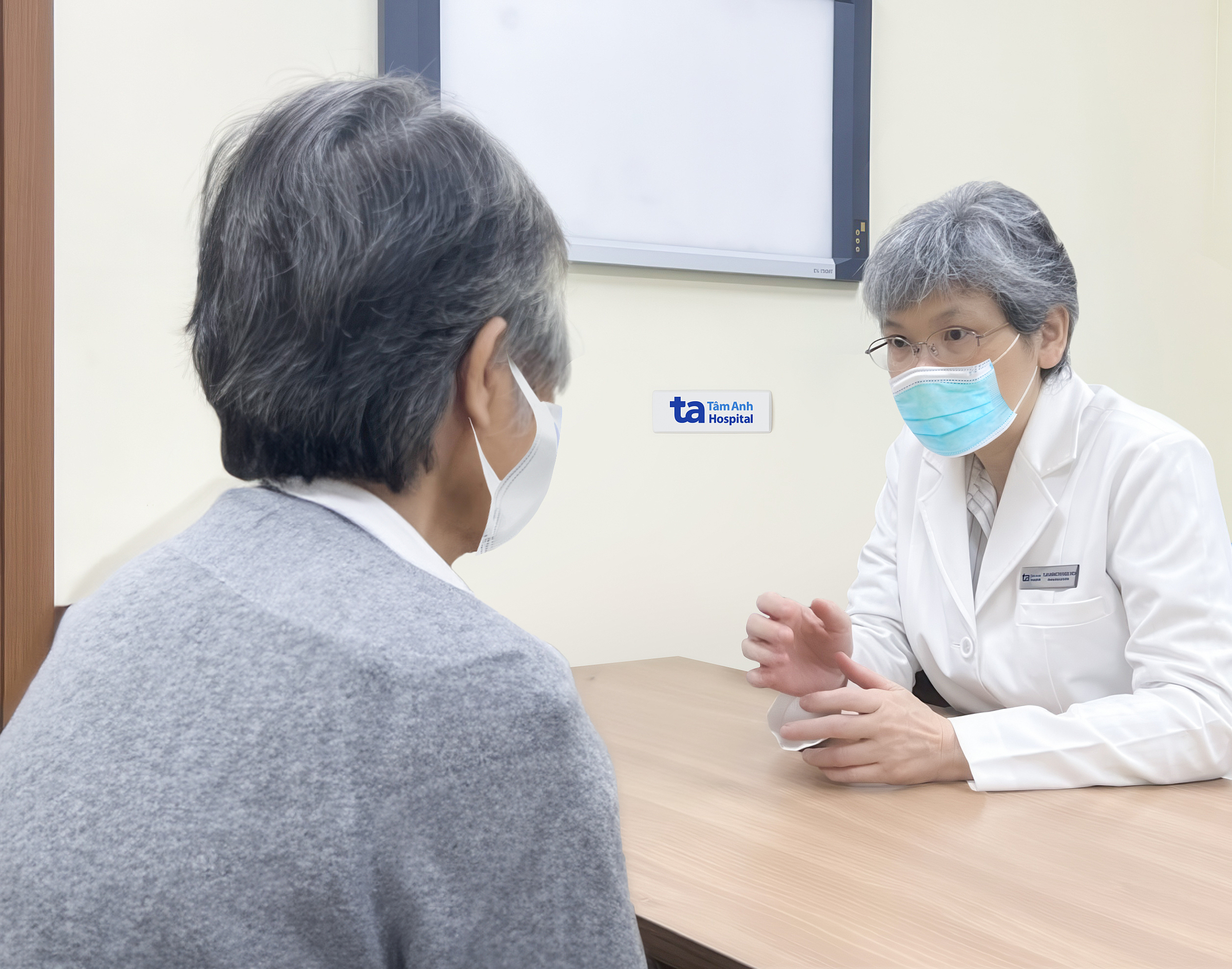In 1984, Nga developed a small, firm nodule on her lower lip. It would occasionally swell, then subside after one or two weeks. Recently, the swelling became unusually pronounced, prompting her to visit Tam Anh General Hospital in Ho Chi Minh City. Doctor Dang Thi Ngoc Bich, head of the dermatology and cosmetic dermatology department, observed a 2 cm growth with a persistent ulcer, hardened edges, an uneven surface, and slight discharge. Doctor Bich suspected squamous cell carcinoma, a common form of skin cancer affecting the lips.
The optimal treatment would have been surgical removal and biopsy to confirm the diagnosis. However, Nga was hesitant about surgery. After consulting with the breast, head, and neck surgery department, Doctor Bich opted for cryotherapy using liquid nitrogen once a week, combined with oral and topical medication.
Cryotherapy employs liquid nitrogen at extremely low temperatures (around -196 degrees Celsius) to destroy cancerous tissue, including some early-stage skin cancers. The liquid nitrogen freezes the affected tissue, causing rapid destruction and promoting healing. A scab forms over the treated area within two to four days and eventually peels off, taking the dead cells with it. This method is safe, minimizes bleeding, and can be used on most areas of the body, though caution is advised in sensitive areas with numerous blood vessels like the groin or armpits.
 |
Doctor Bich discusses the treatment plan with Nga. Photo: Tam Anh General Hospital |
Doctor Bich discusses the treatment plan with Nga. Photo: Tam Anh General Hospital
"Cryotherapy doesn't require anesthesia, is minimally invasive, and leaves minimal scarring for small lesions, eliminating the need for recovery time," Doctor Bich explained. She added that it can require multiple treatments and may cause some hyperpigmentation or hypopigmentation. A common side effect is temporary cold burns resulting in blisters and pain, but these are usually manageable.
After three months of treatment, Nga's lip growth was controlled. The lesion shrunk, the redness and spreading subsided, and her lip began to regain a more even color. Because Nga declined surgery, a biopsy couldn't be performed to definitively confirm cancer.
Doctor Bich emphasized that some skin cancers progress slowly, sometimes over decades, without causing noticeable pain, ulcers, or inflammation, leading to patient complacency. These lesions may appear as slightly darkened skin, small nodules, or mild scaling, often mistaken for dry skin or keratosis. If the growth occurs in less visible areas like the back, neck, or scalp, detection becomes even more challenging. Regular skin checks and monitoring any persistent skin changes, however small, are crucial for early detection and effective treatment of skin cancer.
Minh Huong
*The patient's name has been changed.












